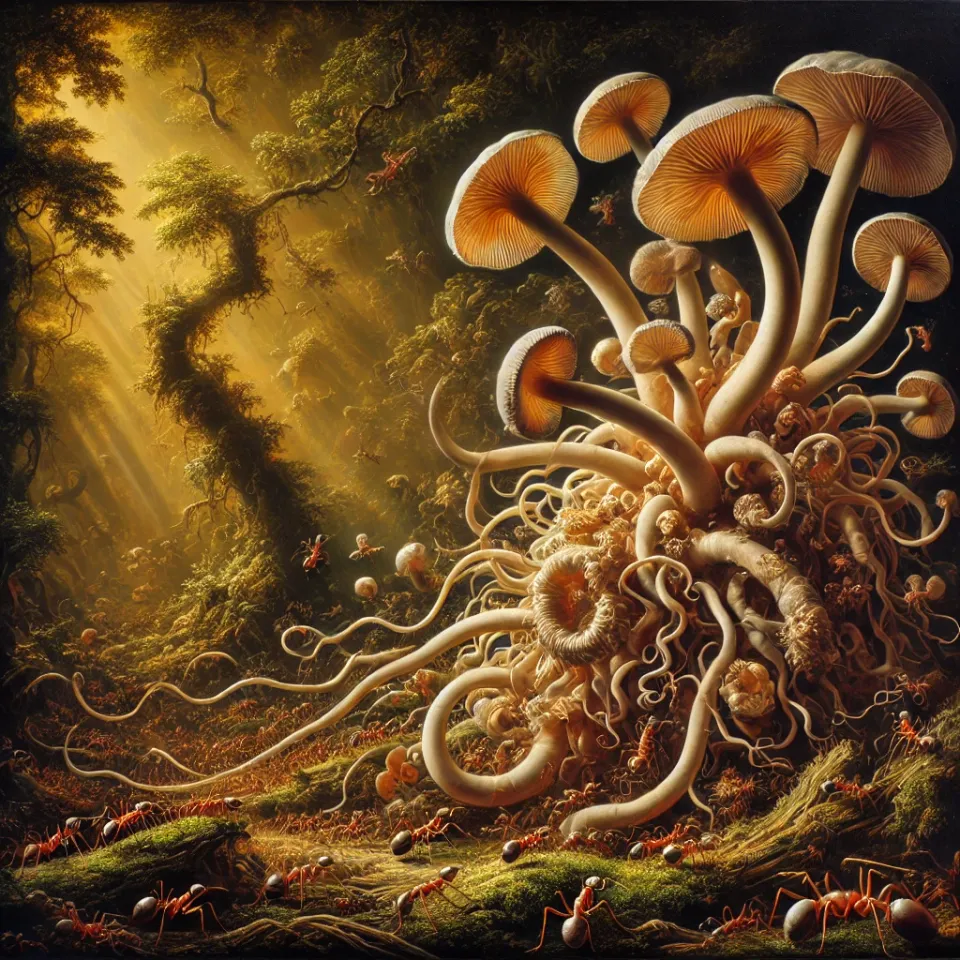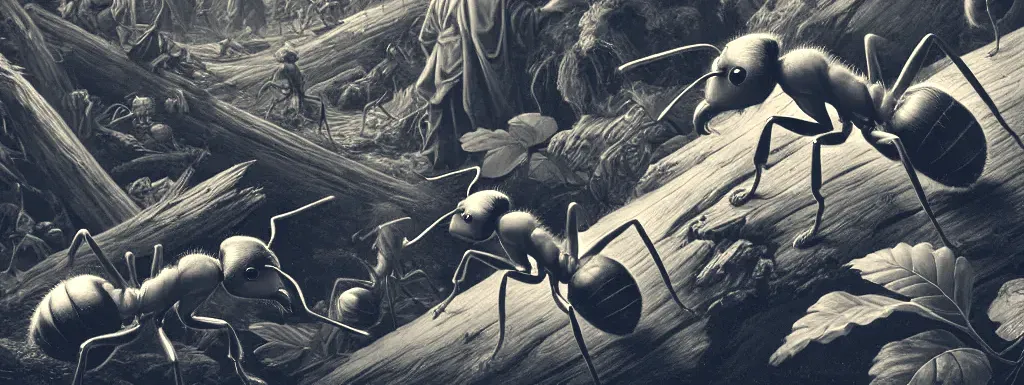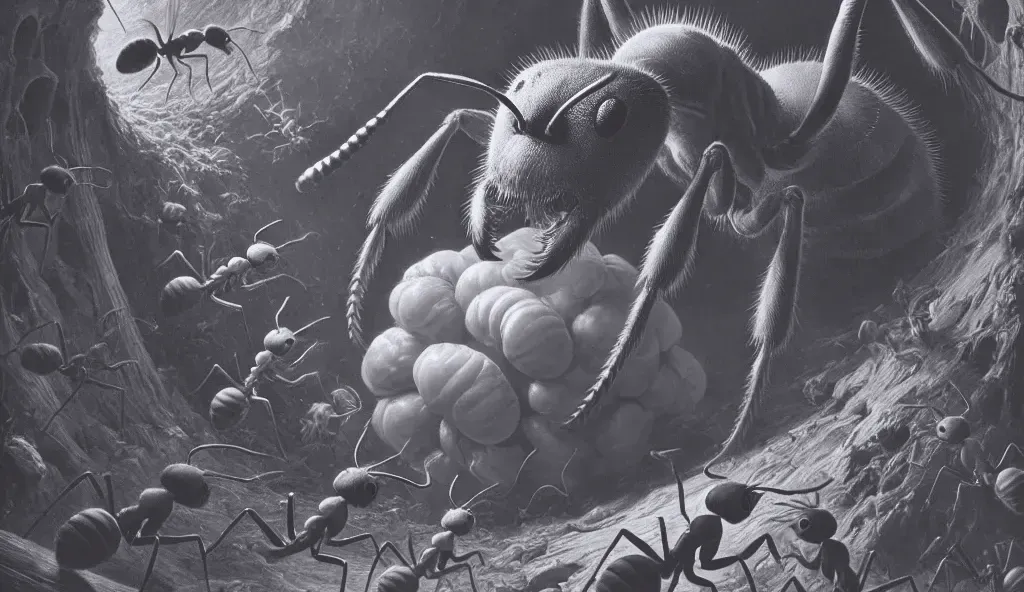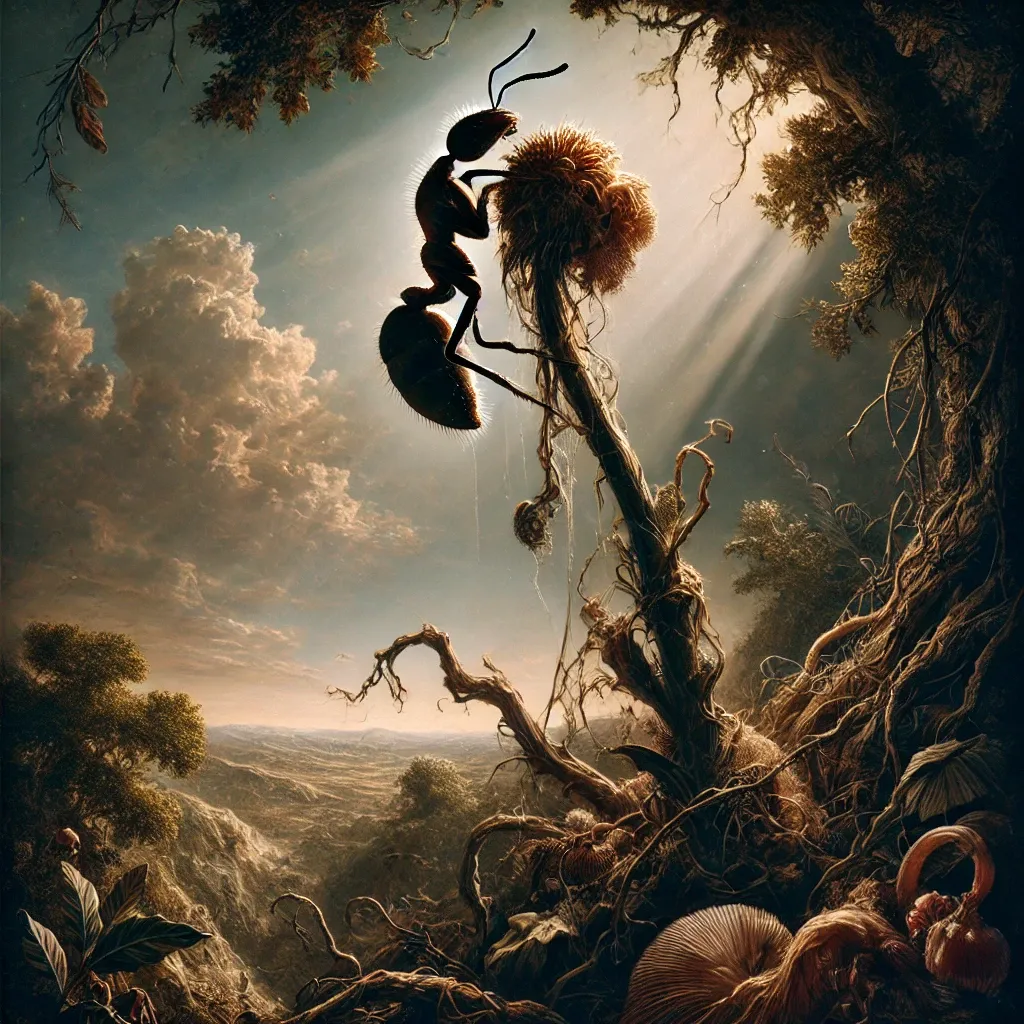Corporatus cringius

Ants, when it comes down to it, are just trying to do their jobs. Most ants are workers, spending their days and nights on chores: regurgitating food to newborn larvae, clearing the desiccated exoskeletons of their weaker workmates, and foraging for resources in hostile territory.
It may not be a glamorous way of life, but it works for them.
In particular, a group of ants called Componotus, are extra industrious. Within the same species, individuals who are genomically indistinguishable filter themselves into various sizes and shapes, each assigned to different chores (including professional regurgitator). They're commonly known as carpenter ants, and they're spread all over the world.

I'm sure they'd be just fine chugging along in their menial lives, but unfortunately there's a golden rule in biology that if you're alive something will try to eat you from the inside. One organism's success encourages another's exploitation. And the great under-appreciated engine of adaptation is parasitism; some species just can't survive on their own.
Carpenter ants are successful enough that, like Thidwick, The Big-Hearted Moose, they've found themselves crawling with uninvited guests.
Just, for a moment, consider yourself as a worker ant, weighing 10 milligrams, and sent out into the jungle for supplies. The friggin' jungle, where any number of sorta-dangerous things can happen!
A bird could eat you, that could definitely happen! Especially if a microscopic worm burrows into your abdomen, turning it bright red, which flags you–really just a public servant, let's be honest–as a "ripe berry" to a terrifying canary 10,000 times your size. Gulp!—down the hatch and Mr. Worm gets free passage to his intended host species, thank you very much.
Or there's the "decapitating flies", Valkyrie-like mothers who stab their ovipositors into the chests of carpenter ants. From there, the hatching larvae burrow relentlessly yet carefully around the vital organs until reaching the neck. Which they digest slowly until–plonk! The ant's skull makes a nice, cozy nursery for the wriggling maggots until they're ready to head off into the world and continue the cycle of decapitation.
I'm not trying to be macabre–this stuff really happens! I'm barely even talking about the beetles who hijack the ants' communication system, the wasps who suck their blood, or the thread-like worms who digest them from the inside, turning them bloated, sluggish and inert. Or (and this is just so cruel) the related species of ant, a cousin, that steals their babies from the nest and raises them as slaves. I mean... jeez!

So life can be pretty tough for carpenter ants! Bad things can happen, and they constantly risk being taken advantage of.
But there's one insidious horror that gives me the heebie jeebies more than all the others. An organism so grotesquely manipulative that the poor, productive little arthropods don't even know they're infected until its too late.
Ophiocordyceps unilateralis, also known as the "Zombie Fungus".
A single spore, half the size of a red blood cell and littered on the forest floor in the trillions, settles onto the ant. Within days, the ant's cuticle starts to dissolve, and the fungus penetrates inside its host, starting the inevitable chain of its destruction.
Slowly and inexorably, the fungus uses the ant's body for nutrition to grow filamentous tendrils into the brain and muscle tissue. It secretes neurochemicals that make the ant ignore the rest of the colony. Thoughts and behaviors slowly begin to serve another master.
Over time, the ant becomes consumed by one overwhelming drive–to climb up. What superficially looks like ambition ends with them abandoning their nest, their family, their natural order–only the singular and irresistible urge upwards remains. Their movements become erratic. They ascend relentlessly. They forget everything else.
The fungus, having brought its unwitting host to dizzying heights (for an ant), and the perfect conditions for its own sporulation, finally settles the zombie ants jaws in a death-lock at the top of whatever it is they've climbed. The body finally stops moving, its all consuming passion vanishing inside the lifeless exoskeleton.
But the shell of the worker isn't done yet. There's no beating heart to drive purpose back to the colony, but the fungus can still take. Sucking the last bits of raw material out of the dead body, a fungal stalk extends outwards, and in due course rains down its toxic spores back onto the forest floor.

Look–do you think I'm blaming the fungus? Do you think this is some veiled critique of the corporate consolidation of veterinary medicine? Please!
Do I find the fungus's strategy deeply unsettling? Yes! Would I describe it as a careless and cruel villain–alien and terrifying and incapable of base emotions? Yeah... sure. Do I think it lacks a soul, or a heart, or even something as recognizable as a butt? Totally. It's absolutely a cold, dispassionate exploitation machine, at least if you think ants can experience the world the way that we do, which might possibly be a stretch, but you know what?–you've gotten this far in the article, so give me one more paragraph?!
The fungus doesn't know why it does any of these things. It's not self-aware. It has no ability to judge itself. It's not malicious. It's just the way it is, because it came out of a system where the way it is seems to work for it. And just because the ants aren't self-aware enough either to know they've become infected doesn't mean that we should blame the fungus for its actions. It causes chaos and harm only because that's how it stays alive, because it wants to stay alive just as much as any other organism fighting desperately against oblivion.
The fungus is just doing its job, man.





Comments ()